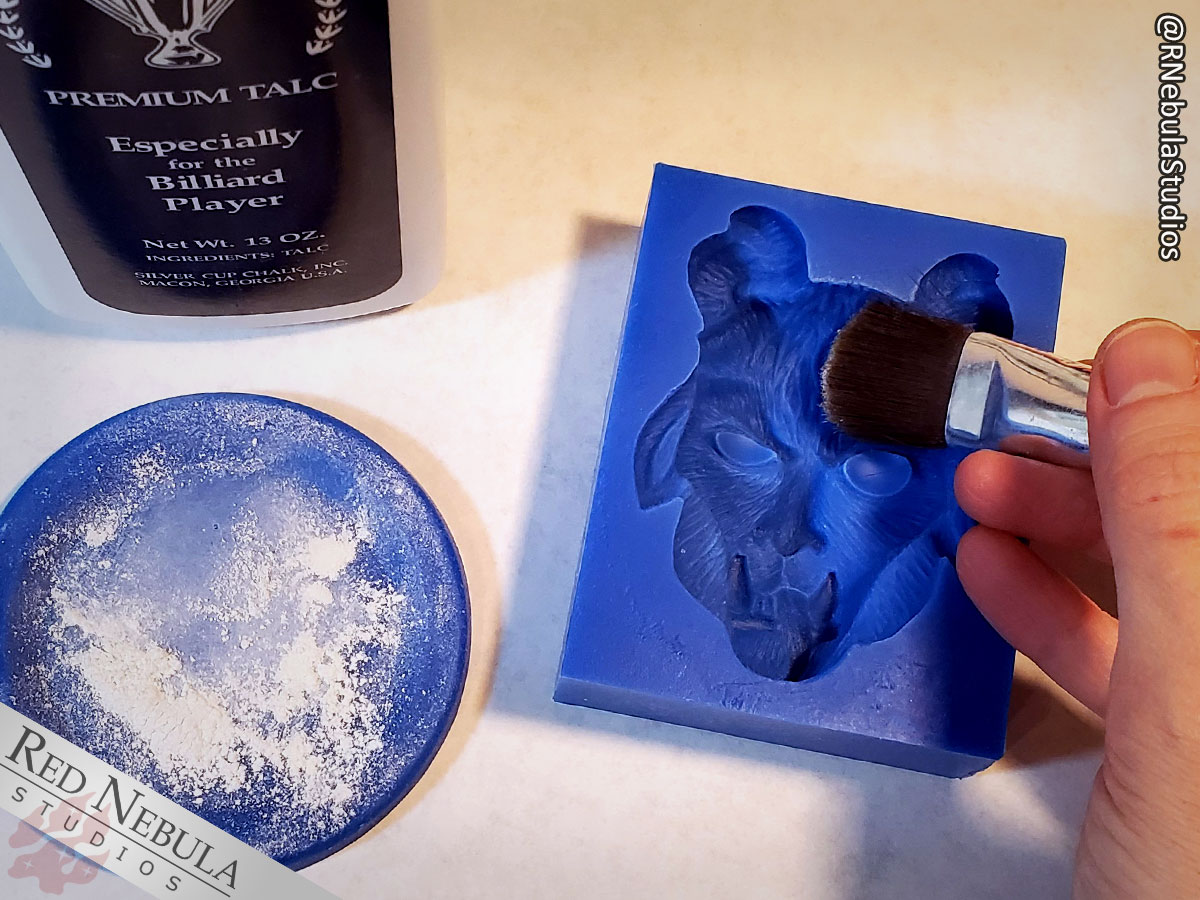Tip: Powdering Molds

This is a quick tip, but a very useful one! If you have a mold that has a lot of detail, and you don't have access to a pressure pot for bubble-free castings, powdering the mold prior to casting is a great way to help reduce bubbles. It also helps give the cast surface a more consistent matte appearance, and gives just a little more texture for paint to grip onto.
What To Use
Unscented talc powder works great! You'll also need a nice soft-bristled brush to apply it. A set of make-up brushes work well - they give you a variety of sizes, and they tend to be made well enough to avoid the bristles falling out.
For the most part, you can get by with just those, but I also find it helpful to have a way to blow stray dust out of hard-to-reach places. You don't want clumps of powder in your mold; that can prevent resin from reaching all the details! For this, you can used canned compressed air (like you'd use to clean the inside of a computer), or they now make electric compressed air dusters for the same purpose without the need of disposable cans. If you have a small airbrush or similar compressor, those work great too!
How It Works
The powder works by breaking the surface tension of the resin as you pour it into the mold. I like to put some talc powder on a separate surface; you can see I've repurposed some leftover silicone rubber pulled from the bottom of my mixing container in the photo. Any flat surface works well, though, like the lid of a food container. I tap the brush in the powder, and then gently dust it into the mold. Make sure to avoid letting it clump in the details, or use compressed air to blow it out. A thin dusting of powder will remain.
You should always pour from low down and carefully to avoid introducing bubbles. I also keep a small tool like a toothpick handy to release any air pockets I see getting trapped.
Keep in mind that this won't help you get bubble-free clear casts. For that, you either need an epoxy with a long cure time that allows bubbles to pop naturally, or the use of a pressure pot to reduce the size of bubbles down so they're invisible to the naked eye. The powder may also make the surface of a clear cast cloudy. This works best on white or tinted casts. I mostly use it with Smooth-Cast 65D, which, despite being formulated for rotocasting, is also great for making some really tough solid-cast pieces that won't snap or crack easily.
Pro Tip
Other types of powders can be applied the same way and not only help with bubble reduction, but they can be used for some neat special effects too. For example, check out Smooth-On's Cast Magic powders, cold-casting metal powders, and glow-in-the-dark powders, or various other types of shimmering mica powders.
If you found this helpful, consider leaving us a tip or becoming a Patron! Your generosity helps our small business thrive.
Categories: Costuming, Tutorials, Materials, and Tools, Tutorials, Tips, and Tricks
Tags: cast resin, dusting, mold, mold casting, molding and casting, moldmaking, powdering, talc powder
Live Date: 11/16/2022 |
Last Modified: 11/16/2022